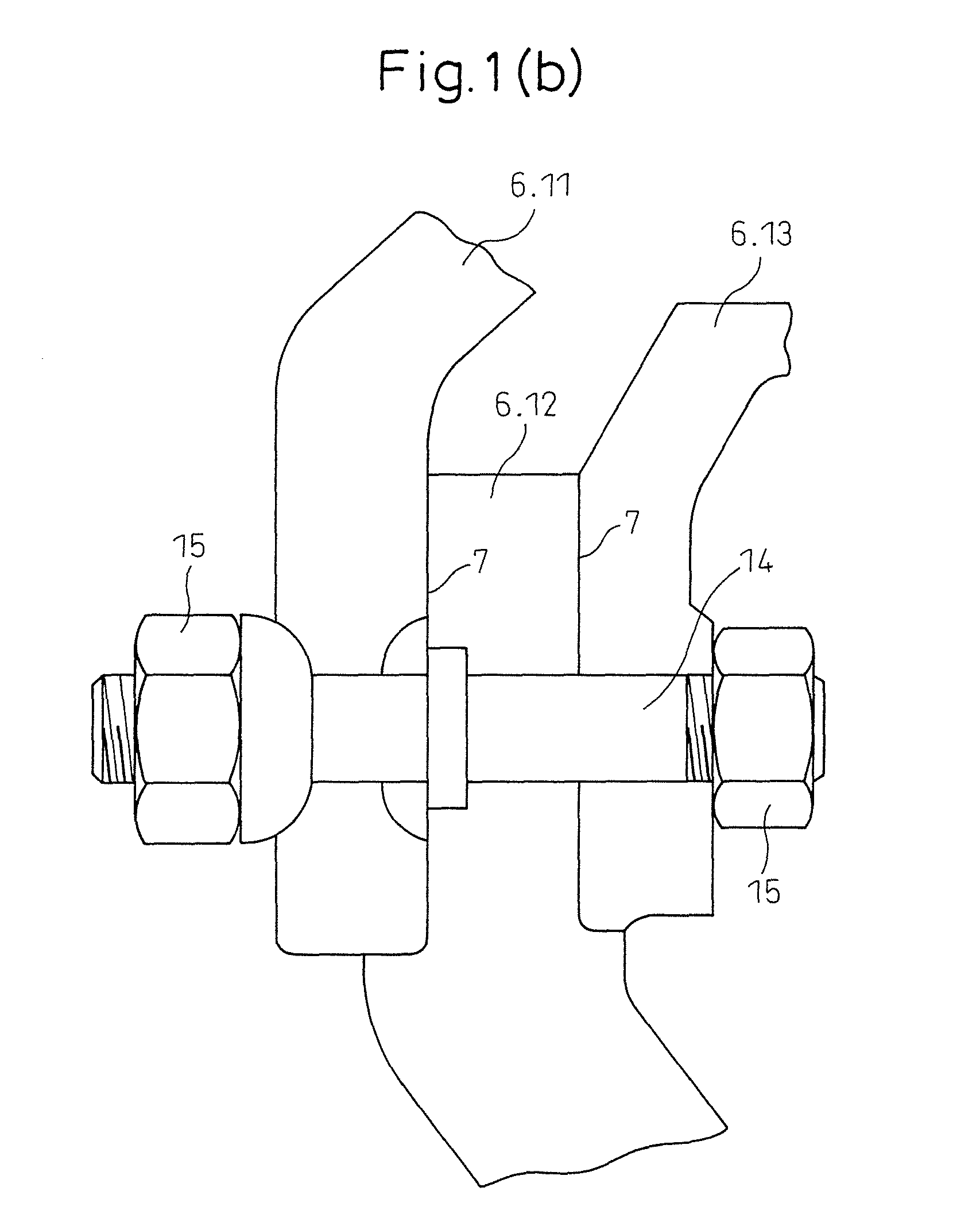Spacer member reducing fretting wear and fastened structures using spacer member
a spacer and fretting technology, applied in the field of spacer members, can solve the problems of difficulty in judging the progress of fretting wear, difficulty in judging the degree of fretting wear, and low fretting wear effect, so as to reduce the occurrence of wear and reduce the occurrence of abrasion
- Summary
- Abstract
- Description
- Claims
- Application Information
AI Technical Summary
Benefits of technology
Problems solved by technology
Method used
Image
Examples
example 1
[0052]When the automobile engine is started, the engine generates a rotational force. A large torque is applied from the engine to the drive parts and rotational force is transmitted to the coupled drive parts (for example, tire wheels, hubs, and brake drums). The tire wheels, hubs, and brake drums are fastened by bolts and nuts to be able to turn and slide. Therefore, the tire wheels, hubs, and brake drums are abraded around the fastened parts of the bolts and nuts (hatched parts 23 of ISO type of FIG. 3(a) and JIS type of FIG. 3(b)). Due to the abrasion of this peripheral part, first the fastened surfaces are worn, the fastening axial force falls, then the bolts loosen and fracture.
[0053]That is, in consideration of the prior art, by experience, the bolt strength is used for design of power transmission, but the surfaces where fretting wear occurs (hatched parts 23 of hub of ISO type of FIG. 3(a) and JIS type of FIG. 3(b)) become uneven, the fastening force falls (bolts and nuts l...
example 2
[0054]As another example, when a bearing part in which bearings are press fit and a shaft runs through the center of the bearings etc. is subjected to fine vibration at the shaft of the bearing part in other than the rotational and sliding directions, the balls inside the bearing abrade the inside surface of the outer race or the outer periphery rubs against the surface of the hole and the hole is enlarged and balls fall out or fine stripes of fine wear are formed and detachment occurs. In addition, various wear occurs. In these cases as well, by inserting the spacer member of the present invention for the purpose of reducing abrasion, it is possible to reduce the effects on the members.
example 3
[0055]Structures of aluminum parts (die castings, machined parts, welded structures, etc.) and different metals (iron, copper, stainless steel, cast iron, etc.) placed face to face and fastened by bolts and nuts etc. have been increasing. Recently, passenger cars with bodies made of all aluminum or a chassis made of iron and the top part, trunk hood, engine hood, etc. made of aluminum have appeared. In such a case, the spacer member of the present invention may be inserted between the iron and aluminum for aluminum protection. The effect of reducing the wear of aluminum due to the fine vibration applied to the body without the fastening force being reduced can be expected thereby leading to an improvement in safety. Further, a DLC film is low in electrical conductivity, so the effect of reducing so-called galvanic corrosion can also be anticipated.
PUM
| Property | Measurement | Unit |
|---|---|---|
| width | aaaaa | aaaaa |
| thickness | aaaaa | aaaaa |
| thickness | aaaaa | aaaaa |
Abstract
Description
Claims
Application Information
 Login to View More
Login to View More - R&D
- Intellectual Property
- Life Sciences
- Materials
- Tech Scout
- Unparalleled Data Quality
- Higher Quality Content
- 60% Fewer Hallucinations
Browse by: Latest US Patents, China's latest patents, Technical Efficacy Thesaurus, Application Domain, Technology Topic, Popular Technical Reports.
© 2025 PatSnap. All rights reserved.Legal|Privacy policy|Modern Slavery Act Transparency Statement|Sitemap|About US| Contact US: help@patsnap.com



